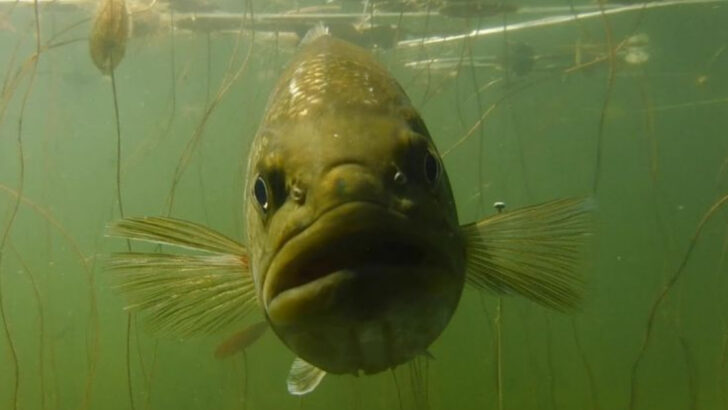Largemouth bass are not just fish—they’re freshwater phantoms with a flair for drama.
One minute, the lake looks still and lifeless. The next, a surface explosion reveals a bass ambush, leaving only ripples and confusion behind. These predators know how to disappear, then strike like ghosts with gills.
But their hiding places? That’s where things get weird.
We’re talking about sunken bathtubs, abandoned shopping carts, and underwater forests that look like scenes from a fishy horror movie. Largemouth bass don’t just survive—they haunt their watery kingdoms like royalty in camo.
If you thought these fish were boring, prepare to be proven wrong in 13 strange, slippery ways.
Largemouth Bass’s Night Vision
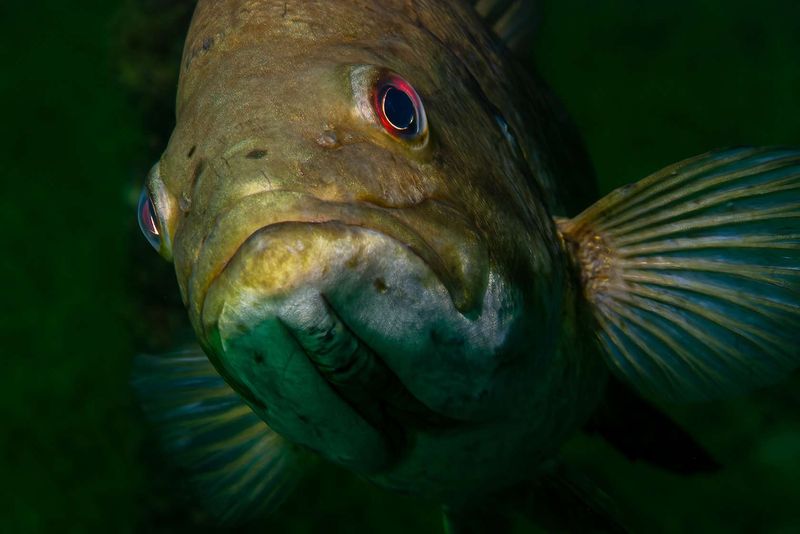
Beneath the moonlit waters, the largemouth bass’s eyes shine like polished gemstones. These fish possess a remarkable night vision, allowing them to hunt efficiently in the dark. Their retinas are specially adapted to low light conditions, giving them an edge over nocturnal prey.
In the silence of the night, they navigate through underwater foliage, using their enhanced vision to detect subtle movements. This nocturnal prowess makes the bass a formidable predator after dusk.
The darkness becomes an ally, turning the bass into a silent hunter, unseen by its prey until it’s too late.
The Bass’s Secret Lair
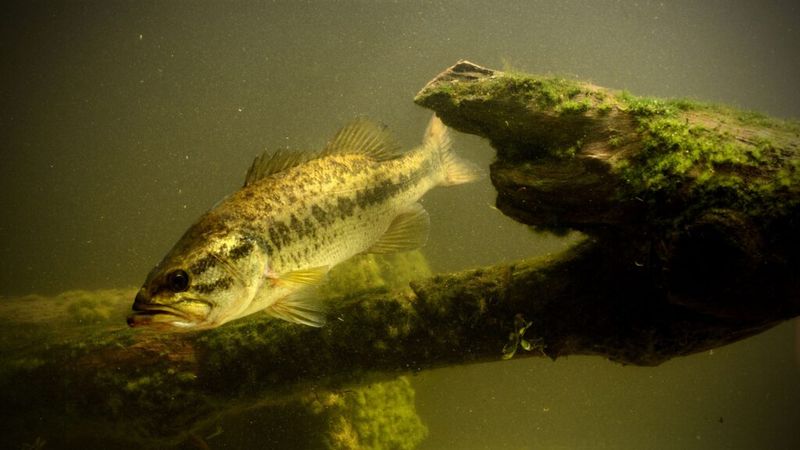
Imagine an underwater fortress, hidden away from prying eyes. The largemouth bass favors such secret lairs, often choosing submerged caves and overhangs as their refuge. These spots provide shelter from predators and a vantage point for ambushing prey.
The bass’s choice of habitat is strategic, utilizing the natural cover to avoid detection. The shadows become their allies, blending with their dark, mottled skin.
When danger approaches, they retreat deeper into their hidden alcoves, becoming invisible to the untrained eye. This choice of dwelling is a testament to their cunning nature.
Mystery of the Floating Vegetation
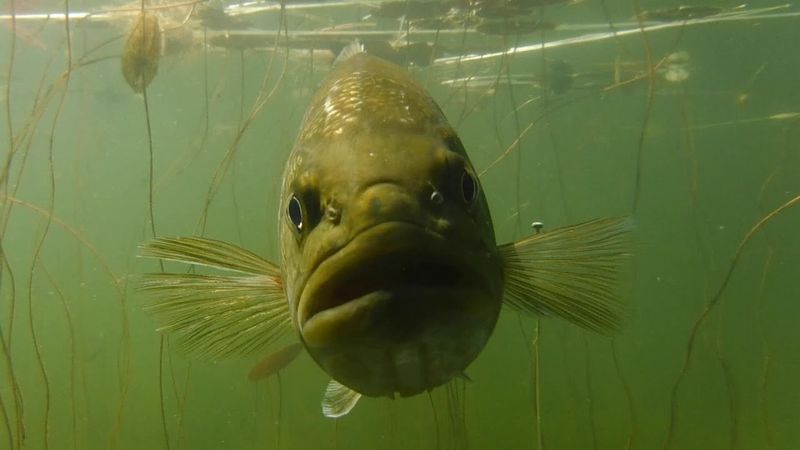
Picture a serene lake, dotted with patches of floating vegetation. Beneath these green canopies, largemouth bass lie in wait. Their preference for such spots is not just for cover but also for the abundance of prey that gathers there.
These green islands act as natural traps, drawing insects and smaller fish seeking shelter. The bass, with its patient demeanor, waits for the perfect moment to strike.
This habitat not only offers sustenance but also camouflage, making the bass an unseen predator in the verdant labyrinth.
The Bass’s Temperature Trick

Amidst the waters, the largemouth bass exhibits an incredible adaptation. It thrives in thermoclines, where warm and cold water layers meet, providing a temperature gradient. This clever choice allows the bass to regulate its body temperature optimally.
The thermocline serves as a haven, offering a blend of temperatures that attract diverse prey. The bass, adaptable and resilient, uses this to its advantage, conserving energy while maximizing hunting efficiency.
This temperature trick is a survival strategy, illustrating the bass’s ability to thrive in varied environments.
Bass Symphony: The Sound of Silence
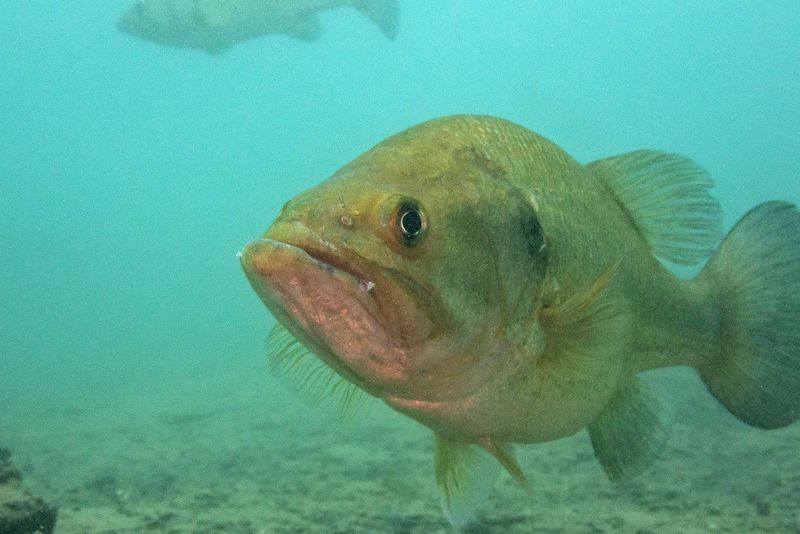
In the silent underwater world, sound becomes a crucial element for the largemouth bass. They rely on subtle vibrations and acoustics to communicate and hunt. Their lateral lines sense these delicate waves, enabling them to detect prey and other bass.
This symphony of silence allows them to navigate murky waters with precision. The bass’s world is one of whispers, an intricate dance of sound and movement.
Through this natural aptitude, the bass ensures its survival, proving that silence indeed speaks volumes in the aquatic realm.
A Peek Into the Bass’s Diet
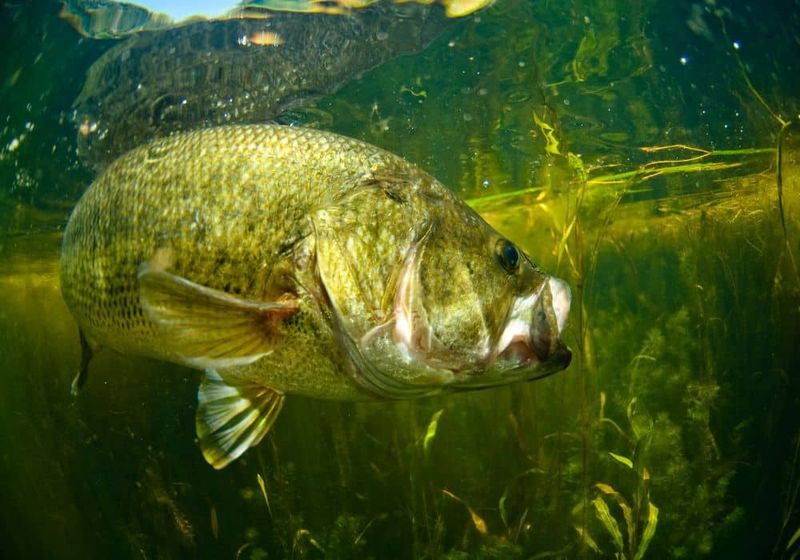
The largemouth bass, with its expansive mouth, has a diet as varied as the waters it inhabits. From minnows to amphibians, their culinary preferences are diverse. This adaptability ensures their dominance in the food chain.
Their hunting strategy is opportunistic, relying on both stealth and speed. The bass’s diet reflects its adaptability, as it shifts preferences based on availability.
Each meal is a testament to its versatile nature, capable of taking advantage of the richest feeding grounds. The bass’s diet is a mosaic of its surroundings, a true reflection of its ecosystem.
Bass and the Art of Ambush
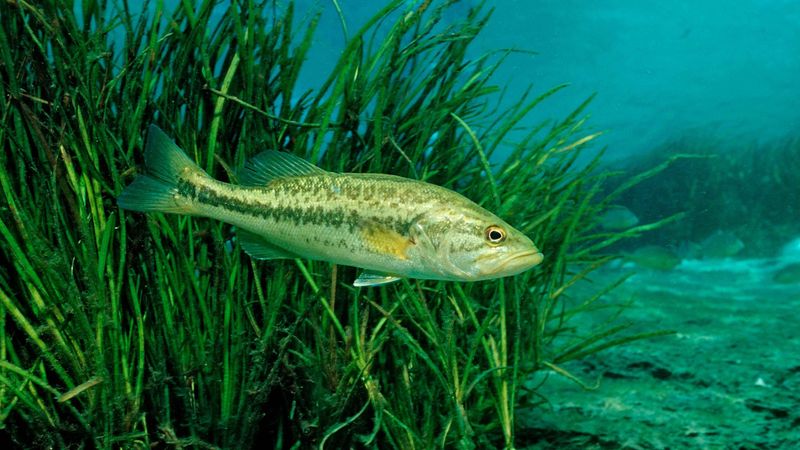
In the intricate dance of predator and prey, the largemouth bass excels in the art of ambush. With unmatched patience, it waits, concealed among aquatic plants, for the perfect opportunity to strike.
The bass’s stealth is its greatest weapon, allowing it to launch a surprise attack with minimal effort. This method ensures efficient energy use, crucial for survival.
The ambush technique is a blend of instinct and strategy, showcasing the bass’s prowess as a cunning hunter. Every successful ambush adds to its reputation as a dominant force in its aquatic domain.
The Bass’s Love for Docks

Docks offer a unique allure for largemouth bass, providing both shade and a constant influx of food. These structures create an ideal environment, attracting baitfish, insects, and other prey.
Beneath the dock’s shadows, the bass finds refuge and a strategic hunting ground. The interplay of light and shadow offers camouflage, enhancing the bass’s stealth.
This affinity for man-made structures exemplifies the bass’s adaptability, turning potential obstacles into advantageous habitats. The presence of docks becomes an integral part of their ecosystem, a testament to their resourcefulness.
Unveiling the Bass’s Spawning Secrets
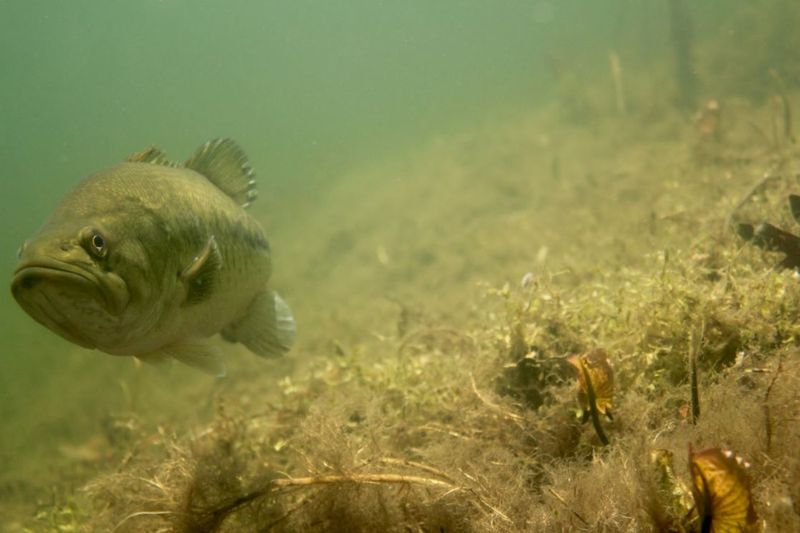
During spawning season, the largemouth bass reveals a softer side. In shallow waters, males construct nests, diligently guarding the eggs until they hatch. This parental instinct ensures the survival of the next generation.
The spawning process is a collaborative effort, with females choosing mates based on nest quality. This selective behavior highlights the importance of reproduction in the bass’s life cycle.
The spawning period is a time of vulnerability and dedication, showcasing the bass’s commitment to its lineage and the continuation of its species.
The Bass’s Tactical Retreat
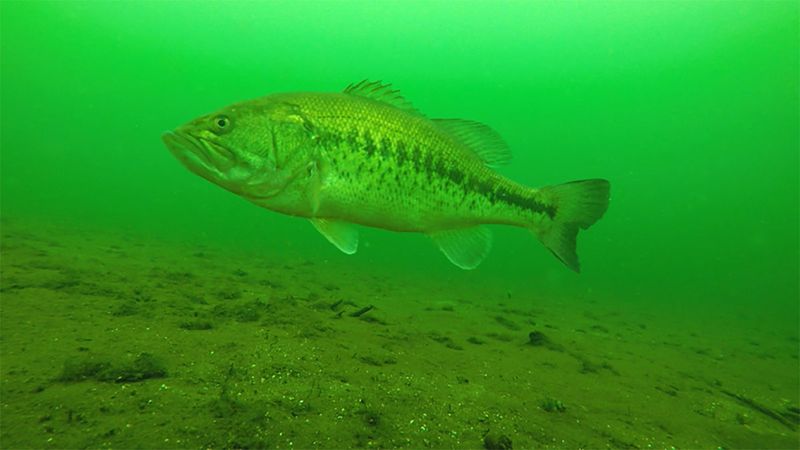
When faced with threats, the largemouth bass executes a tactical retreat. This rapid escape maneuver, combined with its agility, makes it a challenging target for predators.
Underwater structures become allies, providing cover during these swift retreats. This ability to evade danger is a testament to their survival instincts.
The bass’s quick reflexes and strategic use of its environment ensure it remains a formidable presence in its habitat, avoiding potential threats with finesse and skill.
The Camouflage Masters
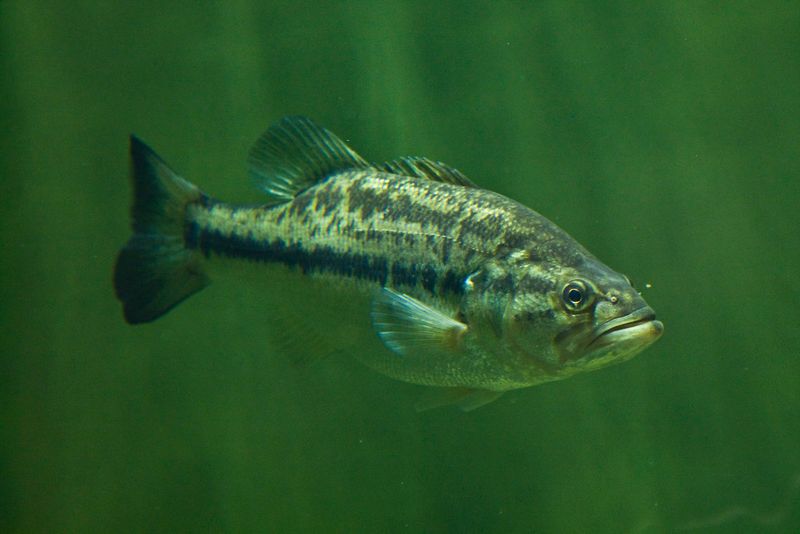
As masters of disguise, largemouth bass utilize their mottled skin to blend seamlessly with their environment. This camouflage is vital, both for hunting and evading predators.
Their ability to adapt their appearance to match their surroundings is an evolutionary marvel, aiding in their survival. Whether lurking on the lake bed or among plants, their invisibility is key.
This natural artistry in concealment ensures that they remain unseen until they choose to reveal themselves, a testament to their ingenuity and adaptation.
The Bass’s Unexpected Dining Etiquette
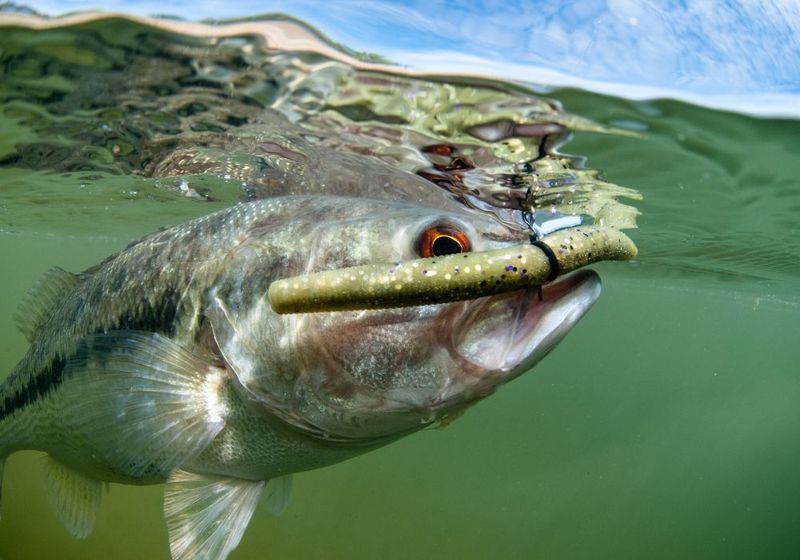
Though known for their aggressive hunting, largemouth bass can display surprising finesse. Delicately picking off insects from the water’s surface, they showcase an unexpected dining etiquette.
This behavior highlights their adaptability, capable of shifting hunting techniques based on prey availability. The bass’s nuanced approach reflects a deep understanding of their habitat.
These varied techniques ensure they remain top predators, able to exploit diverse food sources. The bass’s dining habits reveal a complexity often overlooked, a blend of aggression and subtlety.
The Bass’s Winter Wonderland
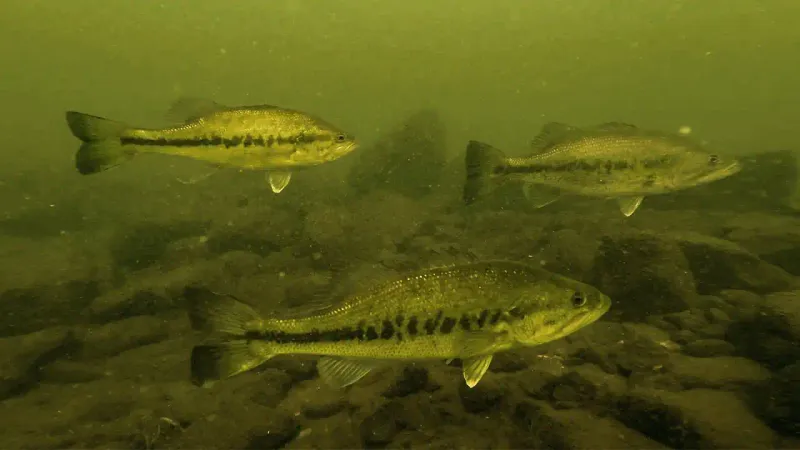
Winter transforms the bass’s world into a serene wonderland. Beneath the icy surface, they enter a state of reduced activity, conserving energy until warmer days return.
This seasonal behavior showcases their ability to endure harsh conditions. The cold waters slow their metabolism, allowing them to survive with minimal food intake.
In this tranquil state, bass embody resilience, adapting to the shifting seasons with grace. The winter wonderland becomes a testament to their enduring spirit, waiting patiently for spring’s revival.

